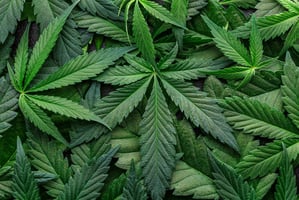Bipolar II Disorder Associated With Higher Prevalence of Seasonal Affective Disorder

Patients with early-onset bipolar II disorder may be more likely to experience seasonal affective disorder (SAD) than those with other mood disorders, according to a study published in Depression and Anxiety.
“SAD can co-occur with several psychiatric disorders, including mood disorders,” wrote Heon-Jeong Lee, M.D., Ph.D., of the Korea University College of Medicine, and colleagues. They noted that although there have been debates on separating SAD as an independent diagnosis, DSM-5 recognizes seasonality as a specifier of major depressive disorder, bipolar I disorder, and bipolar II disorder.
The authors recruited 378 participants from the Mood Disorder Cohort Research Consortium study, a multicenter observational study of individuals with early-onset mood disorders including major depressive disorder, bipolar I disorder, and bipolar II disorder. The participants had to be either under 25 years old or under 35 years old and treated for a mood disorder for less than two years. Participants completed the Korean language version of the Seasonal Pattern Assessment Questionnaire to determine overall seasonal impairment and the Mood Disorder Questionnaire to identify bipolarity. The authors also recruited 235 health control subjects.
Of the participants, 138 were diagnosed with major depressive disorder, 101 were diagnosed with bipolar I disorder, and 139 were diagnosed with bipolar II disorder. Participants with mood disorders had higher overall seasonal impairment than the healthy controls. About 10% of participants with major depressive disorder and bipolar I disorder also had SAD, compared with 23% of those with bipolar II disorder and only 6% of the controls. Participants with bipolar I disorder had the highest proportion of winter-associated SAD, while those with major depressive disorder had the highest proportion of summer-associated SAD. Participants with bipolar II disorder were between two and three times more likely to experience SAD compared with those with major depressive disorder.
Additionally, the authors noted that previous studies have shown that SAD is more common in females than males. Their study, however, did not identify sex as a risk factor for SAD, which they hypothesized may be due to the younger age of the study sample and suggests that risk factors for seasonality in patients with early-onset mood disorder may differ between age groups.
“It remains unclear and needs further investigation to understand why [bipolar II disorder] has the highest seasonality among the mood disorders,” the authors wrote. “Considering the close relationship between [bipolar II disorder] and SAD, it may be helpful for clinicians to screen for seasonality in [bipolar II disorder] and bipolarity in those suspected to have SAD.”
For related information, see the Psychiatric News article “This Winter, Pandemic May Intensify Seasonal Depression.”
(Image: iStock/Rocky89)
APA to Sponsor Webinars on Impact of COVID-19 on MH of African Americans
Join APA for a two-part webinar series that will examine strategies and opportunities to improve the mental health of African Americans during the pandemic, while also raising awareness and building trust on the efficacy of the COVID-19 vaccine. The webinars will be held on April 8 beginning at 7 p.m. ET.
Don't miss out! To learn about newly posted articles in Psychiatric News, please sign up here.






